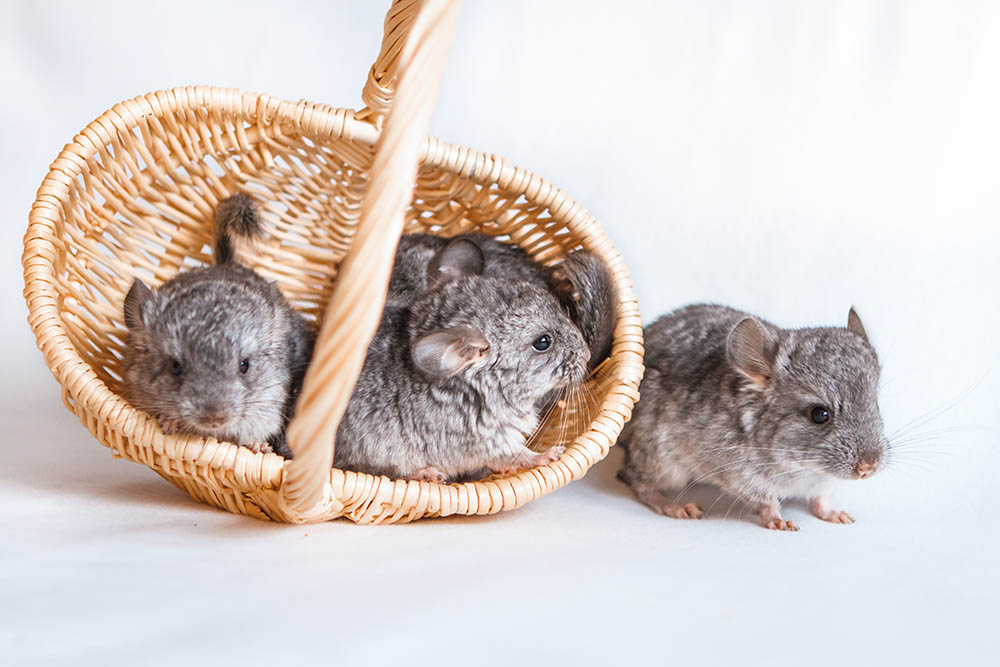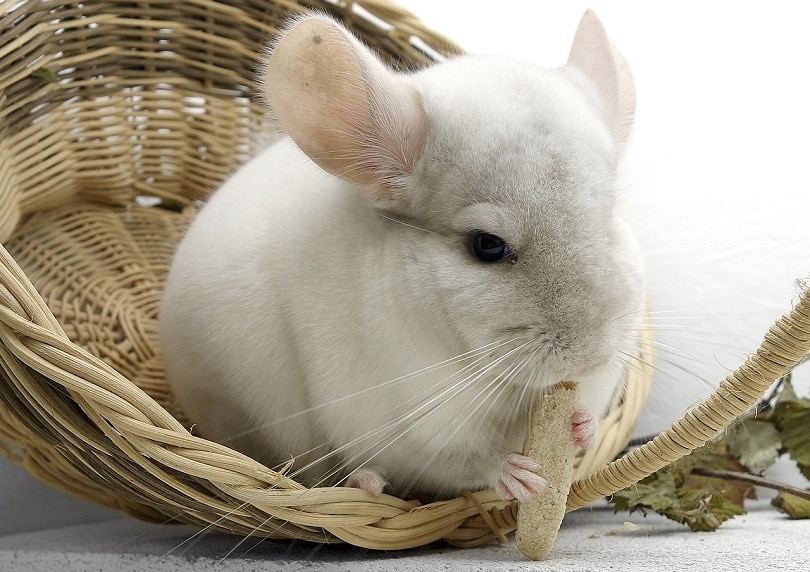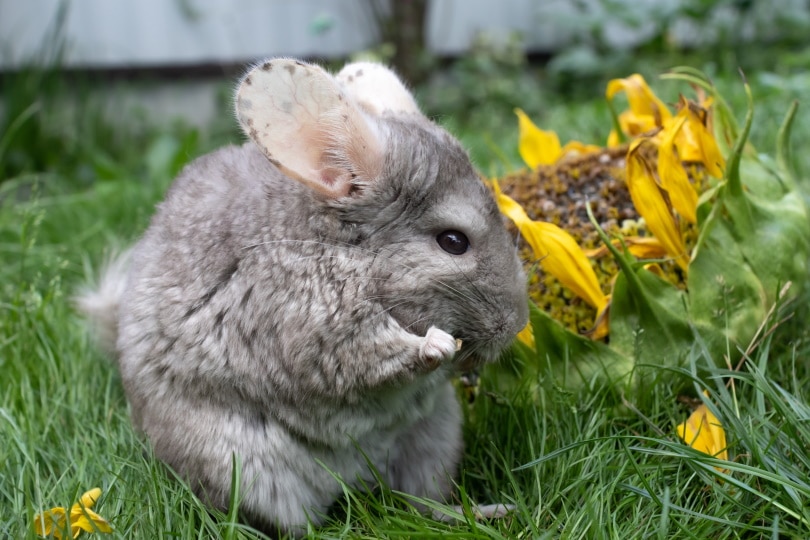
If you’re noticing a urine smell or stain on your wood floors or other wood surfaces, and it is not caused by your dog or cat, then the most likely culprit is mice. Mouse urine can have quite a pungent odor, and the smell tends to get stronger as you move closer to where the mice are living.
In addition to being generally unpleasant, mouse urine can discolor wood and even put you at risk for disease by coming into contact with it. That’s why it’s important to clean it up, but you also have to use caution when doing so. In this article, we’ll explain how to get mouse urine from wood in a way that is both safe and effective.
Before You Begin
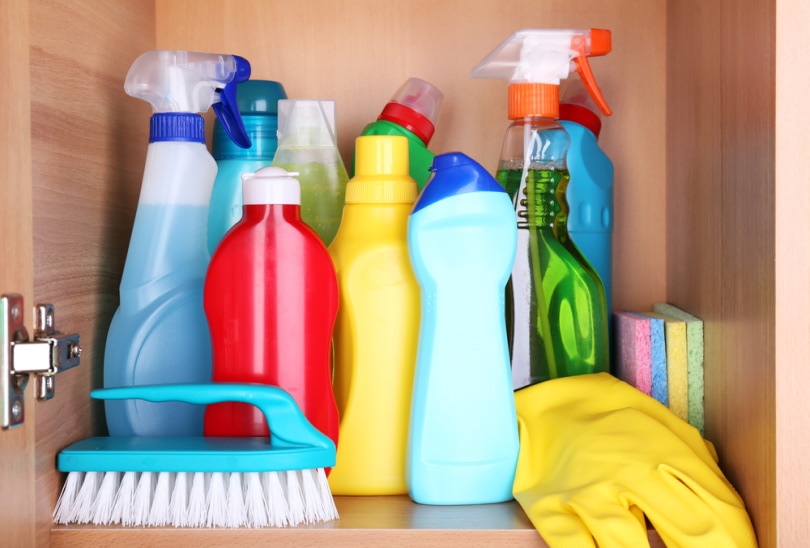
Before you begin cleaning up the mouse urine from wood, here are some things you’ll definitely need for your safety and to effectively remove the urine:
Additionally, here are some things you may need depending on your situation. Don’t worry—we’ll provide more details about when you might need the following items:
The 7 Tips on How to Clean Mouse Urine From Wood
1. Locate the Urine
If mice are peeing on wood out in the open, it can be easy to locate. You will notice the odor as well as possible changes in the color and texture of the wood, especially if mice have been urinating there for a long time. The wood may even appear warped or soft.
But if you smell the odor and don’t notice physical changes in the wood or if mice are urinating in a dark or hidden area, the location of the urine can be harder to find. Or, maybe there are multiple locations and you want to make sure you clean them all. In either case, you can use a blacklight to detect the urine, as some of the chemicals in the urine will cause it to glow. If you don’t have a physical blacklight but have a smartphone, there are blacklight apps you can download.
If there are multiple urine locations, it may be helpful to mark them in some way so you can make sure to cover all the infected areas when you start the cleaning process.
2. Ventilate the Area
Once you’ve located the urine, you’ll want to ventilate the area. Ventilation helps to both reduce the odor caused by the urine and reduce the effects of breathing in the fumes from the cleaning products you’ll be using later.
The easiest and best way to ventilate an area is to open windows and doors if it’s warm enough to do so. But if you can’t open windows and doors or the area where the urine is located doesn’t have windows, you can ventilate the area by turning on the air conditioner or ceiling fan. If nothing else, turn on some portable fans in the room to increase airflow.
3. Wear Protective Equipment
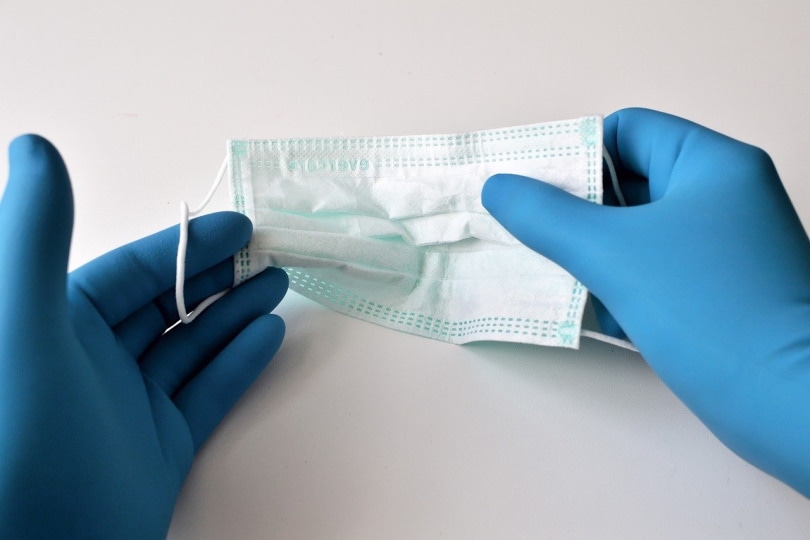
Before you begin cleaning up the mouse urine, you must wear protective clothing. Mice can carry hantavirus and other diseases and the diseases can be transmitted to you by coming into contact with their urine, droppings, or other mouse particles, especially in poorly ventilated areas.
At the very least, you need rubber or nitrile gloves to protect your hands and a mask to protect you from breathing in germs and other particles. But, you may also wish to wear an apron so that you don’t get anything on your clothes either.
Protective equipment can also protect you from the fumes in some of the cleaning products you’ll be using, particularly bleach. Bleach can burn your skin if it gets on your hands and it can also cause respiratory problems as a result of breathing it in. Bleach can also damage your clothes, which is another reason why you might want to wear an apron.
4. Clean the Area
Once you’ve donned your protective gear, you can begin cleaning the area. There are several ways you can go about this depending on what products you have on hand and what you’re comfortable using.
Using Bleach
Bleach is the most effective product for cleaning up mouse urine as it can disinfect, sterilize, and remove the odor from wood. But remember that it is a strong product and can cause health problems and discoloration if used incorrectly. Make sure the area is well-ventilated and that you dilute the bleach with water according to the instructions on the packaging.
Diluting the bleach will also make it less harmful if it were to get on your skin or clothes. Don’t apply non-diluted bleach directly to the wood, as it will surely cause damage and you’ll have another problem on your hands. Instead, dilute the bleach in a bucket and use a scrub brush to scrub it into the areas where the mouse urine is located.
Using a Disinfectant Spray
Some people don’t feel safe using bleach even if it is diluted. There are other products you can use as well, but you’ll have to take extra steps. First, use a disinfectant spray to clean the area and remove any bacteria and germs that may still be in the urine.
Applying Cleaner
Then, you can use either an enzymatic cleaner or white vinegar to clean up the mouse urine and remove the odor.
Our Favorite Product
Hepper Advanced Bio-Enzyme Pet Stain & Odor Eliminator Spray is our favorite all-purpose cleaner for pet messes. It permanently lifts the very worst stains and odors, making clean up and accident prevention breeze. Hepper offers a 100% guarantee, which is a great bonus! Learn more about it here.
- ADVANCED ENZYMATIC CLEANER - Penetrates the most stubborn smells and stains at the deepest molecular...
- FOR ANY MESS, ON ANY SURFACE - This pet odor eliminator cleans your carpets, floors, furniture,...
- FRESH, NATURAL ODOR - Our unique formulation doesn't rely on dangerous or unpleasant chemical...
At Pet Keen, we’ve admired Hepper for many years, and decided to take a controlling ownership interest so that we could benefit from the outstanding products of this cool cat company!
With either of these products, you can apply them directly to the stained areas of the wood. Then, use a scrub brush to scrub them into the wood.
If there is heavy damage, apply the product to the wood, then place a towel over the area and put a heavy object on top of the towel. The towel will help absorb more of the urine. Once you feel that the area has been cleaned thoroughly, allow the wood to dry completely.
5. Remove the Odor
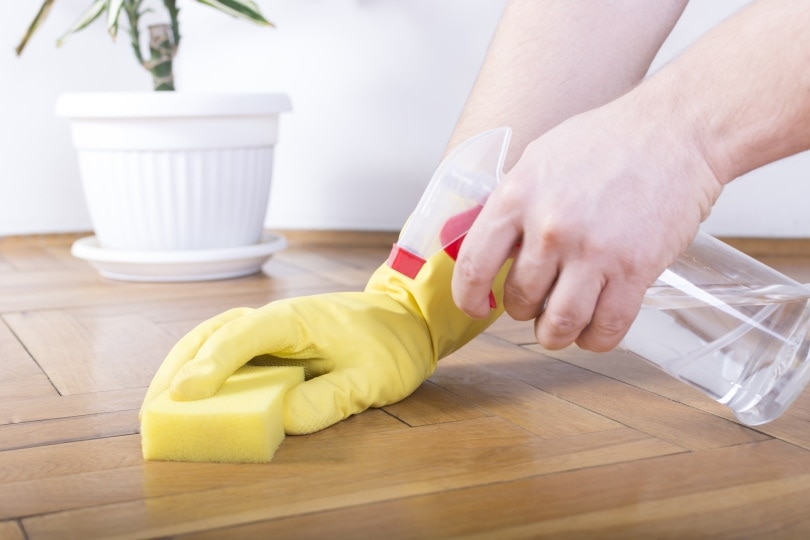
After the wood dries, you may notice that the physical stain is gone but an odor remains behind, especially depending on which cleaning method you used. Or, it may take a little time for the odor to go away if there is little ventilation in the area. In either case, you can add an odor absorber like baking soda to the room or even directly on the stains to help reduce the odor or eliminate it. It’s ideal to leave it overnight for the best results.
6. Cleanup and Disposal
The final step is to clean or dispose of anything that you used to clean up the urine. You should vacuum up the baking soda from the stains after a few hours. You’ll want to wash your clothing and throw away your gloves. You want to make sure that any residue from the mouse urine doesn’t get transferred to other surfaces or objects just in case of disease.
7. You’ve Cleaned the Urine…Now What?
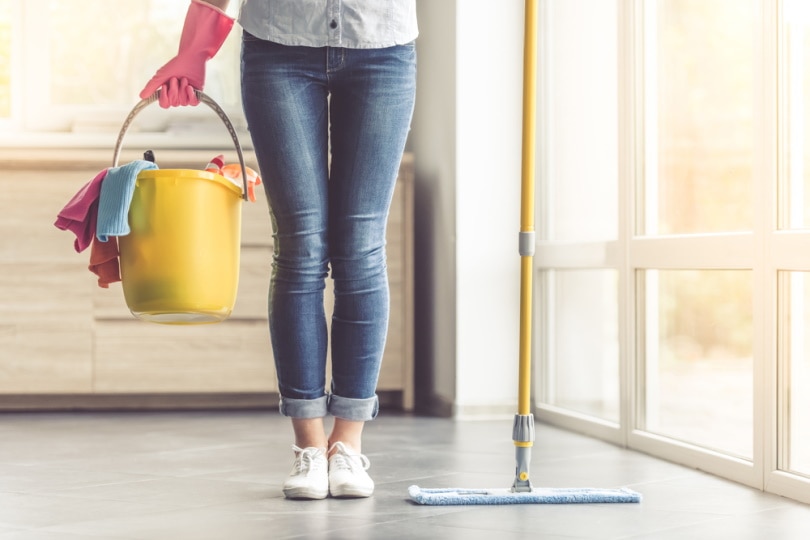
Once you’ve cleaned the mouse urine from your wood surfaces, you’ll want to make sure to get rid of any mice still living in your home, especially if you have an infestation. Otherwise, you’ll be faced with the same problem of having to clean their urine over and over again.
You’ll first need to figure out where the mice are coming from and how they’re getting in so you know what actions to take. Usually, entry points will be near where you found the urine, but you’ll also want to look for droppings, chew marks, and any small openings where they can get it.
If you feel comfortable, you can set mice traps or bait near their entry points. But be careful with baits if you have pets because many of them contain poisons. There are also humane mouse traps available if you don’t want to kill the mice. Once you’ve trapped them, seal up the entry points if possible.
For keeping mice away from your home in general, seal up any food in your cabinets and pantry and make sure that your dog or cat food is sealed as well. Seal your trash can too, if possible, and prune shrubs away from your house, which provides easy access for mice to get in.
You may also wish to try an ultrasonic mouse repellent which works by emitting a high-frequency sound that keeps mice away. However, the effectiveness of these devices varies. In some cases, especially with infestations, you may have to call in a pest control specialist to remove the mice for you.
Conclusion
Mouse urine on wood is not only unpleasant, but it can also be unsanitary and put you at risk for disease. It is important to clean up the urine as well as remove the odor. You’ll need to wear protective clothing while doing so and make sure the area is well-ventilated. After cleaning the area, you’ll also need to make sure to get rid of the mice living in your home. Otherwise, the problem will keep occurring.
- See also: Best Rat & Mouse Urine Cleaners
Featured Image Credit: Stokkete, Shutterstock



